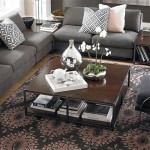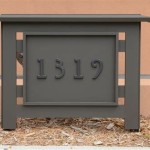```html
How to Decorate a Long Living Room
Designing a long and narrow living room presents unique challenges and opportunities. The elongated shape can feel awkward if not properly addressed, but with careful planning and attention to design principles, it can be transformed into a stylish and functional space. The key lies in breaking up the room, creating distinct zones, and choosing furniture and decor that complement the proportions.
One common mistake is treating the entire space as a single unit, which can emphasize its length and make it feel like a hallway. Instead, the goal should be to visually shorten the room and create a sense of balance. This involves strategic furniture placement, color choices, and the incorporation of architectural elements or visual barriers.
Before embarking on any decorating project, it is essential to measure the room accurately. Note the length, width, and height of the space, as well as the location of windows, doors, and any existing architectural features. This information will be invaluable in planning the layout and selecting appropriately sized furniture.
Divide and Conquer: Creating Distinct Zones
The most effective way to tackle a long living room is to divide it into distinct zones, each serving a specific purpose. This not only breaks up the visual monotony but also adds functionality to the space. Common zones include a seating area, a dining area, a reading nook, or even a home office.
Zone delineation can be achieved through various means. Area rugs are a powerful tool for defining spaces. Placing a large rug under a seating arrangement instantly creates a cohesive and inviting zone. Similarly, a different rug can be used to define a dining area or a reading nook. Consider the size and shape of the rug in relation to the furniture it will encompass. It should be large enough to ground the furniture but not so large that it overwhelms the space.
Furniture arrangement also plays a crucial role in defining zones. For example, a sofa facing a pair of armchairs and a coffee table naturally creates a seating area. Placing a console table behind the sofa can further delineate this zone from the adjacent space. Bookcases or shelving units can also serve as visual barriers, separating different areas of the room while providing storage.
Changes in flooring can also subtly define zones. While it may not be practical to completely change the flooring type throughout the room, consider using different area rugs or even strategically placed tiles to create visual breaks. For example, a patterned rug in the seating area can contrast with a solid-colored rug in the dining area.
Paint color can also be used to distinguish zones. While a cohesive color scheme is generally recommended, accent walls or subtly different shades can be used to highlight specific areas. For instance, a lighter shade can be used in the seating area to create a brighter and more inviting atmosphere, while a slightly darker shade can be used in the dining area to create a more intimate setting.
Strategic Furniture Placement: Playing with Perspective
Furniture placement is paramount in a long living room. Avoid placing all the furniture against the walls, as this will only accentuate the length of the room. Instead, pull furniture away from the walls to create more dynamic and engaging spaces.
Consider placing a sofa perpendicular to the longest wall to break up the line of sight. This will help to create a more intimate seating area and visually shorten the room. Armchairs can be placed on either side of the sofa to further define the space.
The placement of artwork and mirrors can also play a significant role in altering the perception of space. Large-scale artwork placed on the end walls of the room can draw the eye inward and make the room feel less elongated. Mirrors can be strategically placed to reflect light and create the illusion of more space. However, avoid placing mirrors directly opposite the longest wall, as this will only amplify the length of the room.
Opt for furniture that is appropriately scaled to the room. Oversized furniture can overwhelm the space and make it feel cramped, while undersized furniture can get lost in the room. Choose pieces that are proportional to the room's dimensions and that allow for comfortable movement.
Avoid creating a straight line of furniture down the length of the room. This will only emphasize its length and make it feel like a hallway. Instead, stagger the furniture and create visual interest with varying heights and shapes.
Pay attention to traffic flow. Ensure that there is ample space to move comfortably between zones without bumping into furniture. This is particularly important in a long living room, where it can be easy to create bottlenecks.
Light and Color: Enhancing the Space
Light and color are powerful tools for transforming a long living room. Proper lighting can make the room feel more spacious and inviting, while thoughtful color choices can create a sense of balance and harmony.
Maximize natural light by keeping windows clear and unobstructed. Use sheer curtains or blinds that allow light to filter through while providing privacy. If natural light is limited, supplement it with artificial light. Layered lighting is key to creating a well-lit and inviting space. This includes ambient lighting (general room illumination), task lighting (for reading or working), and accent lighting (to highlight specific features). Consider using floor lamps, table lamps, and recessed lighting to create a layered effect.
When choosing colors, opt for lighter shades on the walls to make the room feel more spacious. Darker colors can make the room feel smaller and more enclosed. However, darker colors can be used strategically as accent walls to add depth and visual interest. For example, painting the end wall a darker color can draw the eye inward and make the room feel less elongated.
Consider the overall color palette of the room. Choose colors that complement each other and create a sense of harmony. A monochromatic color scheme (using different shades of the same color) can be very effective in a long living room, as it creates a sense of continuity and visual flow. Alternatively, you can use a complementary color scheme (using colors that are opposite each other on the color wheel) to create a more vibrant and dynamic space.
Pay attention to the color of the furniture and decor. Choose pieces that complement the wall color and create a cohesive look. Incorporate pops of color through accessories such as throw pillows, rugs, and artwork to add visual interest and personality.
Mirrors can be used to reflect light and create the illusion of more space. Place mirrors strategically throughout the room to maximize their effect. Avoid placing mirrors directly opposite the longest wall, as this will only amplify the length of the room. Instead, consider placing mirrors on the side walls to widen the space visually.
By carefully considering light and color, it is possible to transform a long living room into a bright, inviting, and visually balanced space.
Ultimately, decorating a long living room is about understanding the challenges and using design principles to create a space that is both functional and aesthetically pleasing. By dividing the room into zones, strategically placing furniture, and utilizing light and color effectively, it is possible to transform a potentially awkward space into a stylish and inviting living area.
```
17 Long Living Room Ideas Home Design Lover Narrow Rectangular Rooms

How To Arrange Furniture In A Long Narrow Living Room Solutions For Tricky Spaces

17 Long Living Room Ideas Home Design Lover Narrow

How To Arrange Furniture In A Long Living Room Grace My Space

10 Tips For Styling Large Living Rooms Other Awkward Spaces The Inspired Room

Contemporary Living Room By Jeffers Design Group Long Narrow

How To Arrange Furniture In A Long Living Room Setting For Four Interiors
:max_bytes(150000):strip_icc()/decorate-long-narrow-living-room-2213445-04-96b1f74b88d343cba835f6e13fbd50df.jpg?strip=all)
Ideas For Decorating A Long And Narrow Living Room

13 Tricks To Decorating A Large Living Room

How To Arrange Furniture In A Long Narrow Living Room Solutions For Tricky Spaces
See Also








